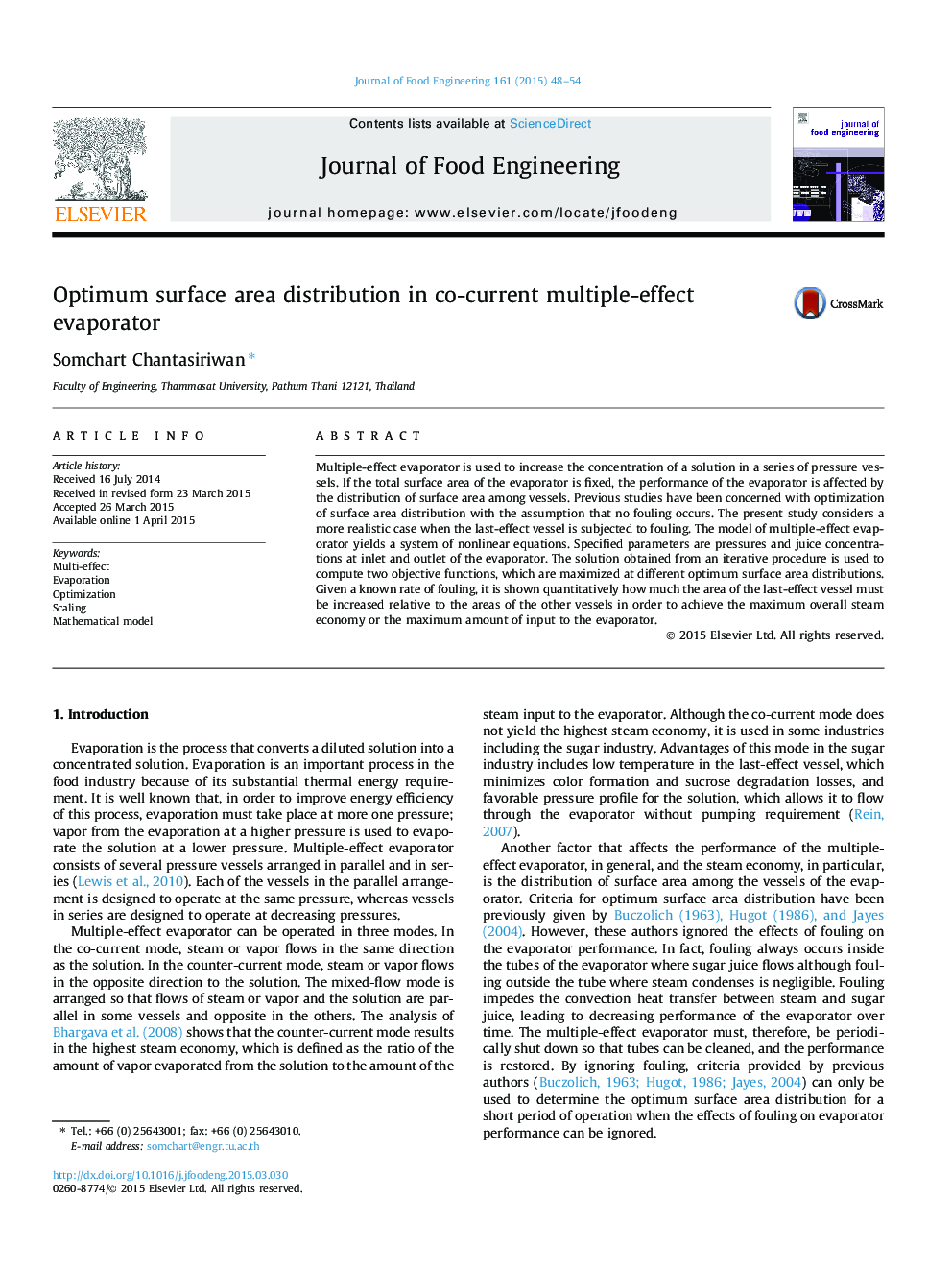| Article ID | Journal | Published Year | Pages | File Type |
|---|---|---|---|---|
| 6665333 | Journal of Food Engineering | 2015 | 7 Pages |
Abstract
Multiple-effect evaporator is used to increase the concentration of a solution in a series of pressure vessels. If the total surface area of the evaporator is fixed, the performance of the evaporator is affected by the distribution of surface area among vessels. Previous studies have been concerned with optimization of surface area distribution with the assumption that no fouling occurs. The present study considers a more realistic case when the last-effect vessel is subjected to fouling. The model of multiple-effect evaporator yields a system of nonlinear equations. Specified parameters are pressures and juice concentrations at inlet and outlet of the evaporator. The solution obtained from an iterative procedure is used to compute two objective functions, which are maximized at different optimum surface area distributions. Given a known rate of fouling, it is shown quantitatively how much the area of the last-effect vessel must be increased relative to the areas of the other vessels in order to achieve the maximum overall steam economy or the maximum amount of input to the evaporator.
Related Topics
Physical Sciences and Engineering
Chemical Engineering
Chemical Engineering (General)
Authors
Somchart Chantasiriwan,
